The sign on the gravel road said “El Chaltén – 372 km.” Twenty minutes later, another sign many kilometers further along the same gravel road, again said “El Chaltén – 372 km.” This was already a long drive on a barely there road, even without the questionable signage. But it was worth it.
Three days into our Patagonian adventure we were headed for El Chaltén, the official Argentinian Trekking Capital. If you’re in El Chaltén it’s because you are there to hike into the mountains or you are there to support those who hike into the mountains. Nestled in the shadow of Cerro Fitz Roy within the confines of Los Glaciares National Park, this small village is all about trekking. And amazing scenery.
Arriving late after the long drive we checked into our cabaña, a wonderful log cabin complete with enough beds and hot showers for the five of us, a serviceable kitchen, and the most amazing wake-up view I’ve had in a long time.
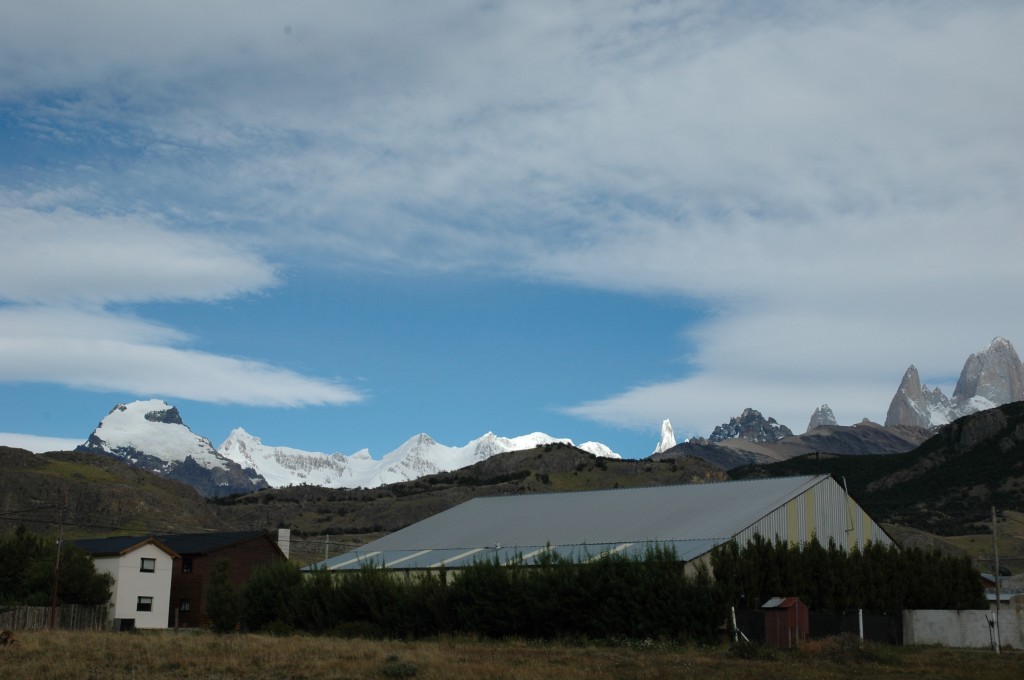
A quick breakfast of toast and dulce de leche (caramelized milk, a staple delicacy in Argentina) and we were on our way to Fitz Roy, which along with Cerro Torre dominates the skyline. Following yet another gravel road meandering along the banks of the Rio de las Vueltas, we stopped several times for the gorgeous views in the crisp mountain air. We were blessed with a beautifully sunny day, a day that would be both memorable and long.
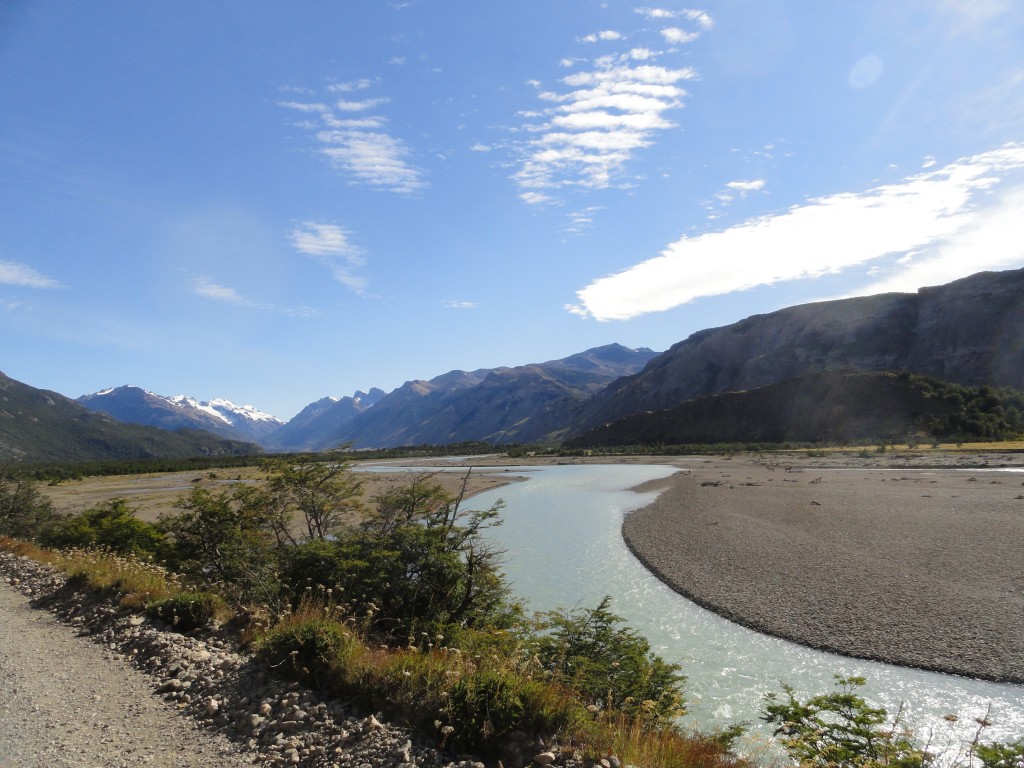
After an 18 km drive we parked near Hosteria El Pilar, a starting location that turned out to be fortuitous for our trip back. Hiking along the Rio Blanco we could see the three-peaked Fitz Roy beckoning us closer.
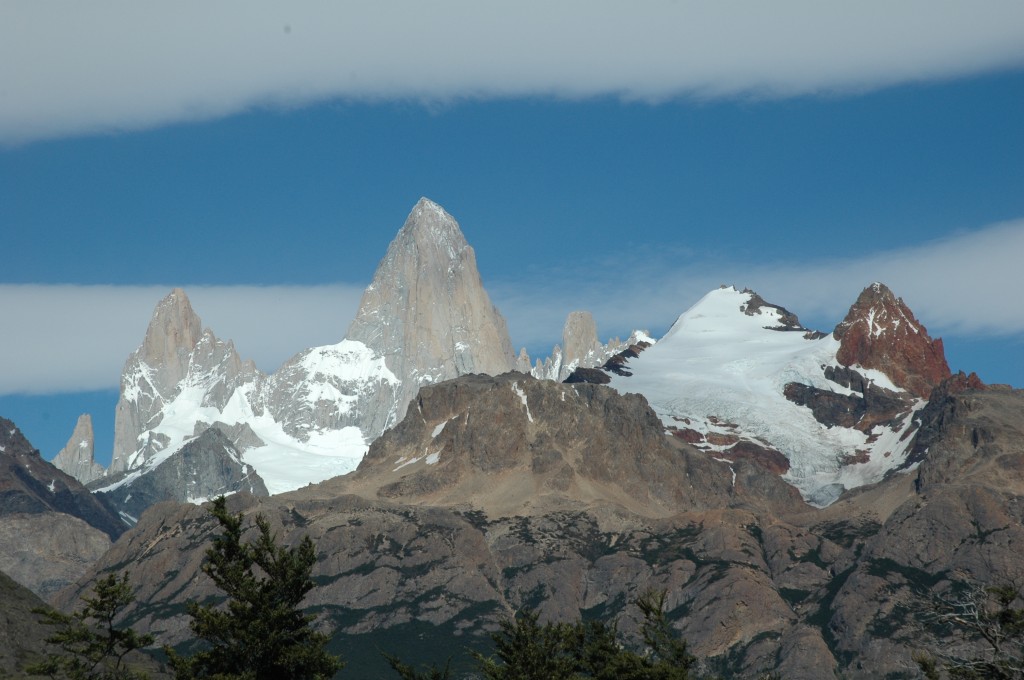
And closer we came. First we got near enough to see the Piedras Blancas glacier close up. This particular glacier flows from the cirque formed by Fitz Roy and continues to a lower level than glaciers we would see later. In the photo you can see Fitz Roy peeking over the hillock to the left, northeast of where Piedras Blancas reaches its small lake.
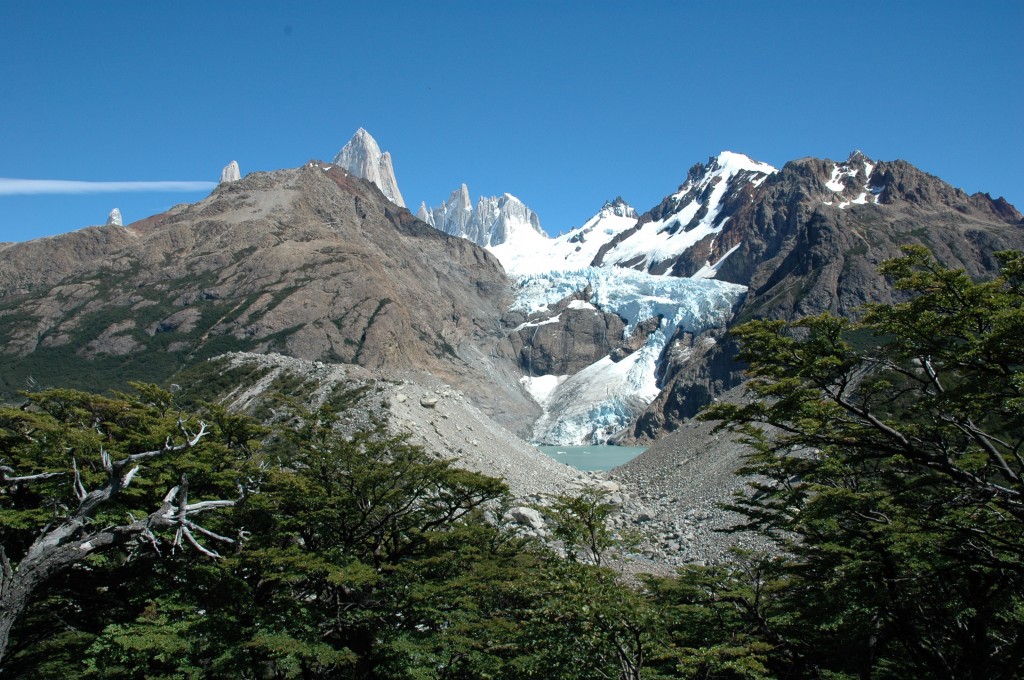
Like many glaciers worldwide, the Piedras Blancas glacier is retreating from its historical lengths. One feature that can be seen in the video below – a gorgeous glacial waterfall.
But our main goal was still ahead of us. Our trail totaled about 6 kilometers (each way). Most of the trail was easy hiking, but the last 1.4 kilometers were about as close to vertical as my legs could handle. At least a third of our four-hour trek to Fitz Roy was on this last section going up. What we found when we arrived was simply marvelous.
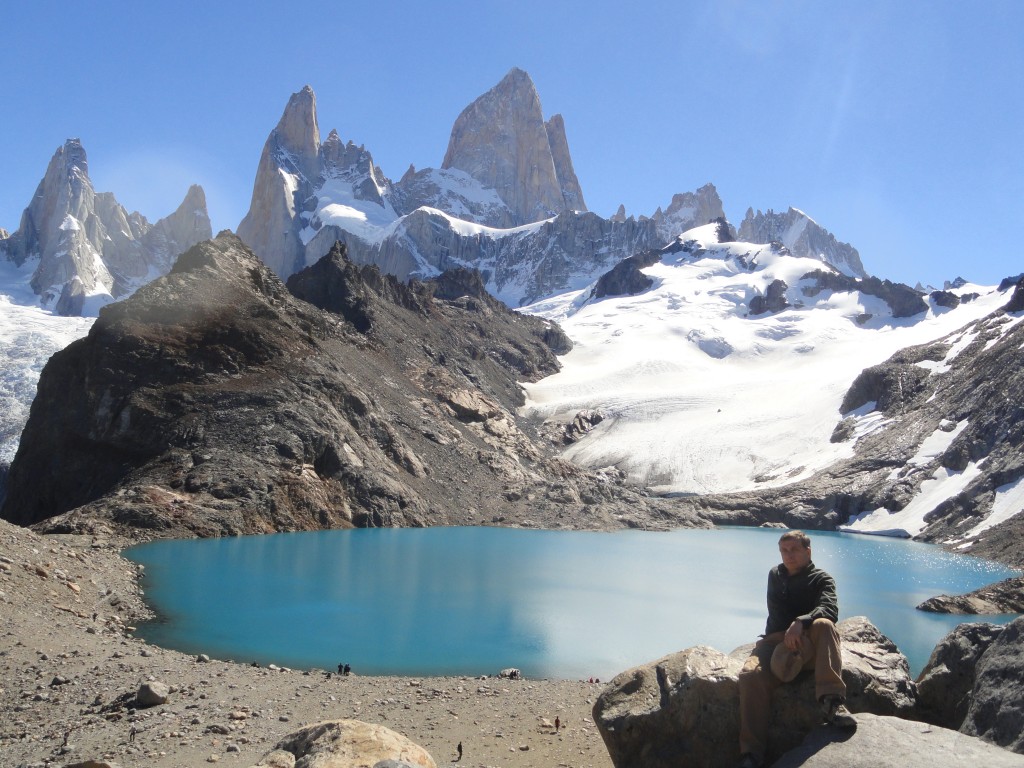
Sitting at the base of Fitz Roy’s main outcropping, which reaches an elevation of over 3400 meters (11,200 feet), is Lagos de los Tres. We were there in late summer (mid-February), so the glacier had retreated back from the edge of this greenish lake. Following along the lake to the left is another glacier, a waterfall, and another lake. The vista was so engaging that it was 5 pm before we started to think about the four hour hike back to where we parked. That hike ended up taking much longer due to a serious fall resulting in a story I later wrote called “The Break.”
Notwithstanding the added excitement, we had an amazing trek up to Cerro Fitz Roy and the various glaciers. An experience I won’t soon forget. Now, on to the next adventure.
David J. Kent is the author of Lincoln: The Man Who Saved America, scheduled for release in summer 2017. His previous books include Tesla: The Wizard of Electricity and Edison: The Inventor of the Modern World (both Fall River Press). He has also written two e-books: Nikola Tesla: Renewable Energy Ahead of Its Time and Abraham Lincoln and Nikola Tesla: Connected by Fate.
Follow me by subscribing by email on the home page. And feel free to “Like” my Facebook author’s page and connect on LinkedIn. Share with your friends using the buttons below.



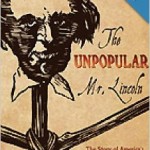 This book, The Unpopular Mr. Lincoln: The Story of America’s Most Reviled President, is a rather extraordinary look at Abraham Lincoln. And a remarkably pleasant surprise given the uncustomary view of Lincoln, as well as the providence of the author. Larry Tagg is not whom you might expect to be writing a biography of Abraham Lincoln. Some will recognize the name from the music world and Tagg’s band Bourgeois Tagg, or from his many years touring with Todd Rundgren, Hall & Oates, and opening for Robert Palmer, Belinda Carlisle and others. Now a high school English and drama teacher in California, Tagg surprises the reader with his deep understanding of Lincoln and his times. And he tackles an often overlooked and difficult facet of how Lincoln was viewed by contemporaries.
This book, The Unpopular Mr. Lincoln: The Story of America’s Most Reviled President, is a rather extraordinary look at Abraham Lincoln. And a remarkably pleasant surprise given the uncustomary view of Lincoln, as well as the providence of the author. Larry Tagg is not whom you might expect to be writing a biography of Abraham Lincoln. Some will recognize the name from the music world and Tagg’s band Bourgeois Tagg, or from his many years touring with Todd Rundgren, Hall & Oates, and opening for Robert Palmer, Belinda Carlisle and others. Now a high school English and drama teacher in California, Tagg surprises the reader with his deep understanding of Lincoln and his times. And he tackles an often overlooked and difficult facet of how Lincoln was viewed by contemporaries.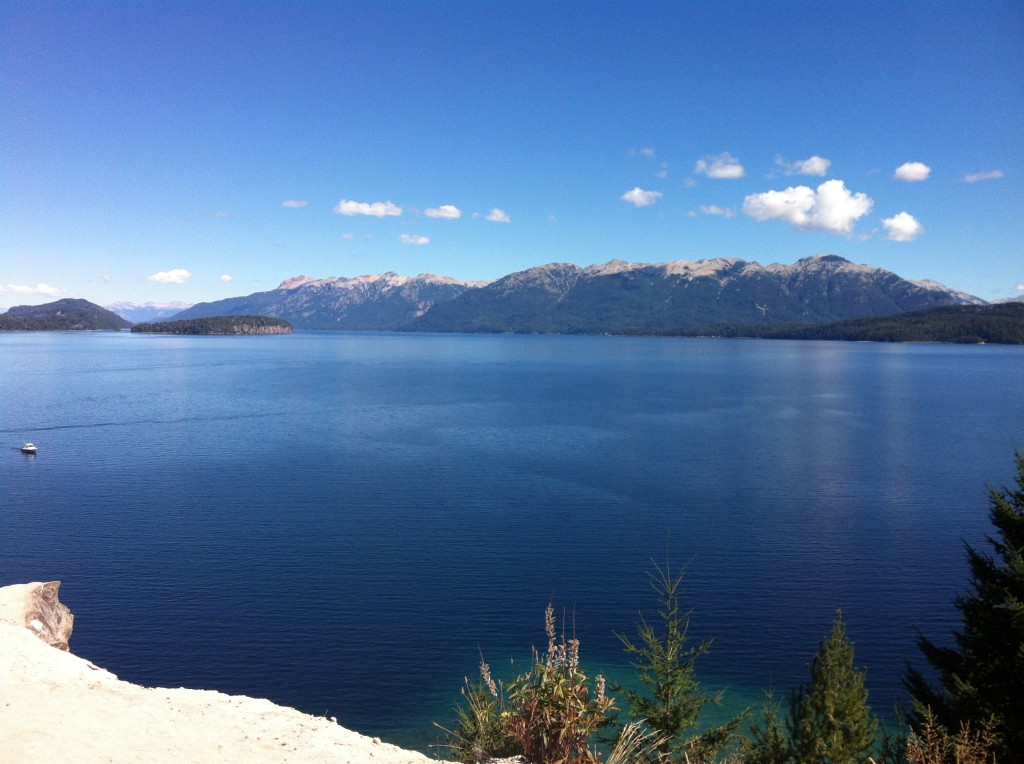
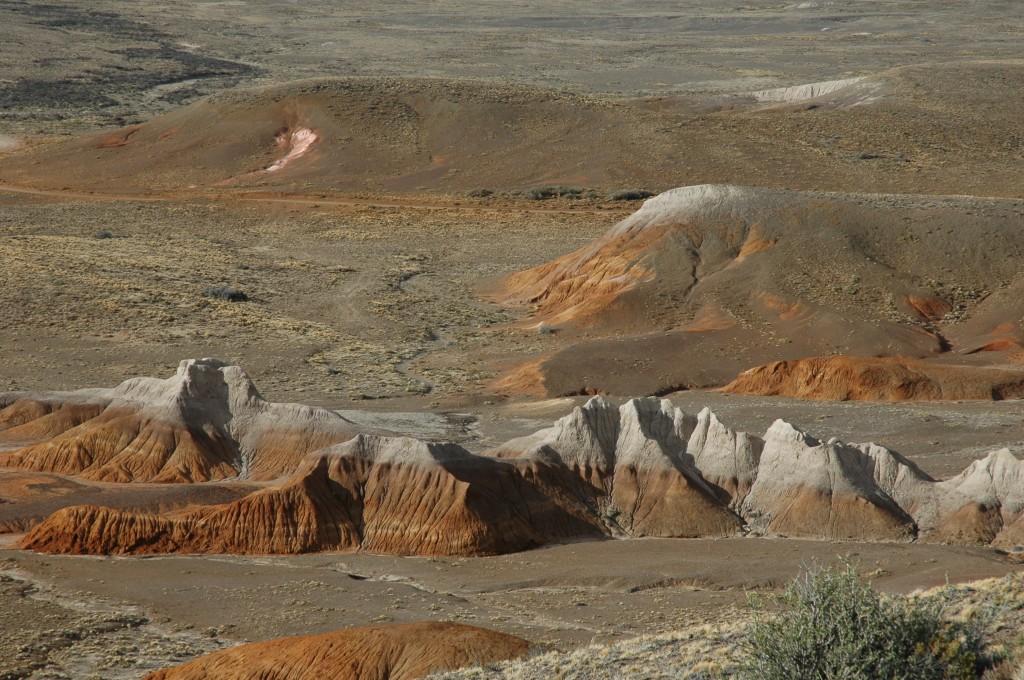
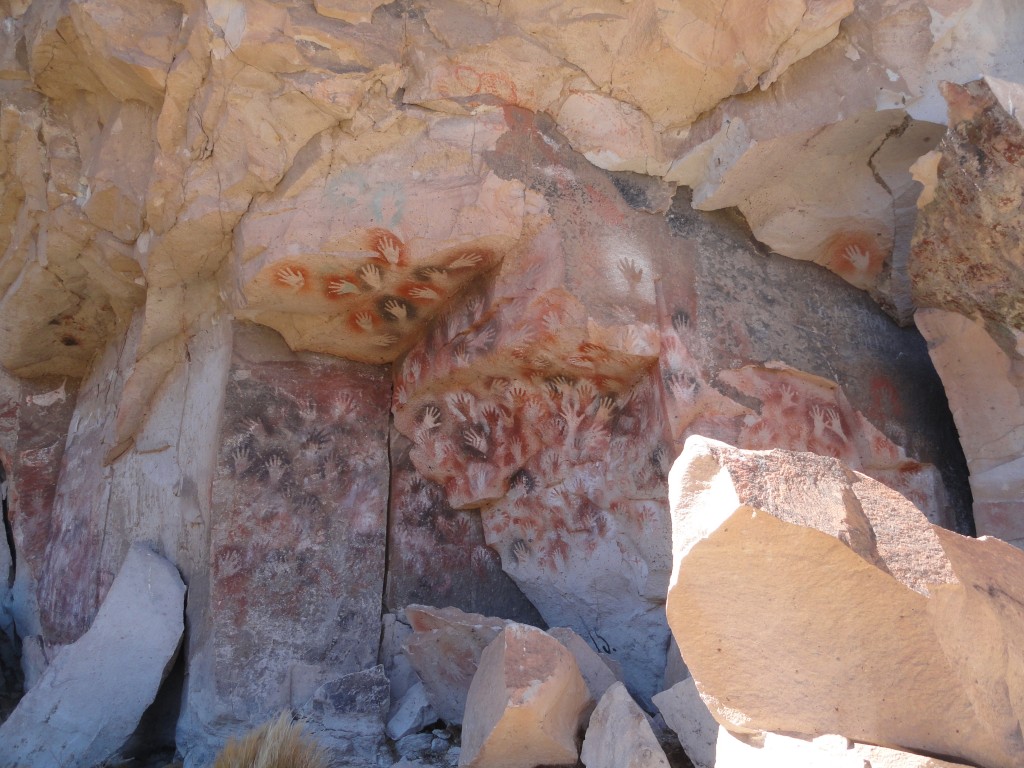
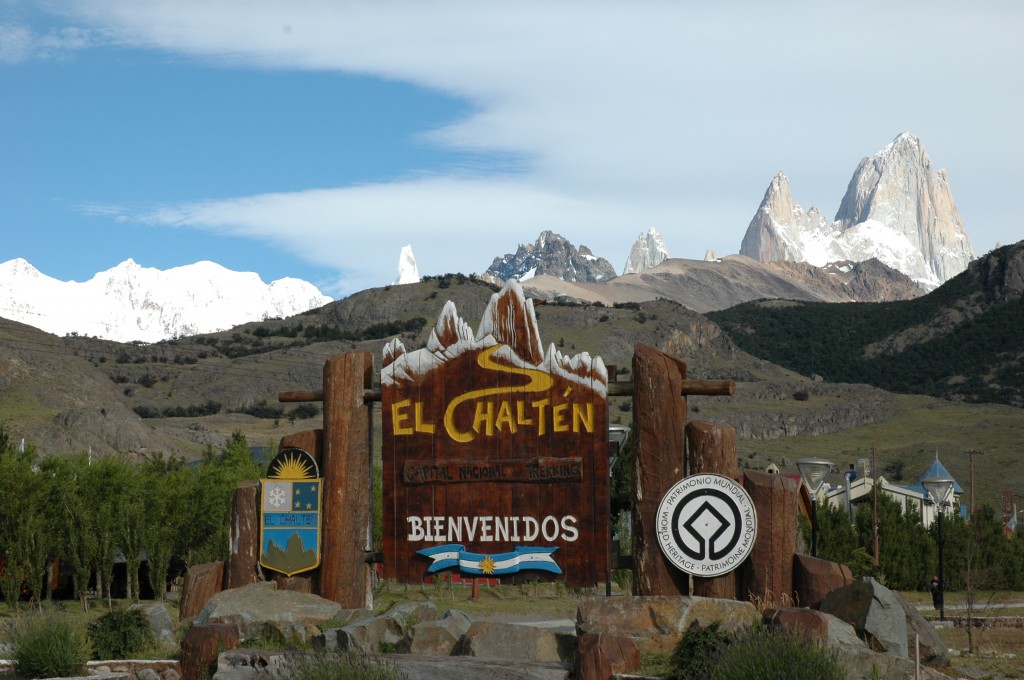
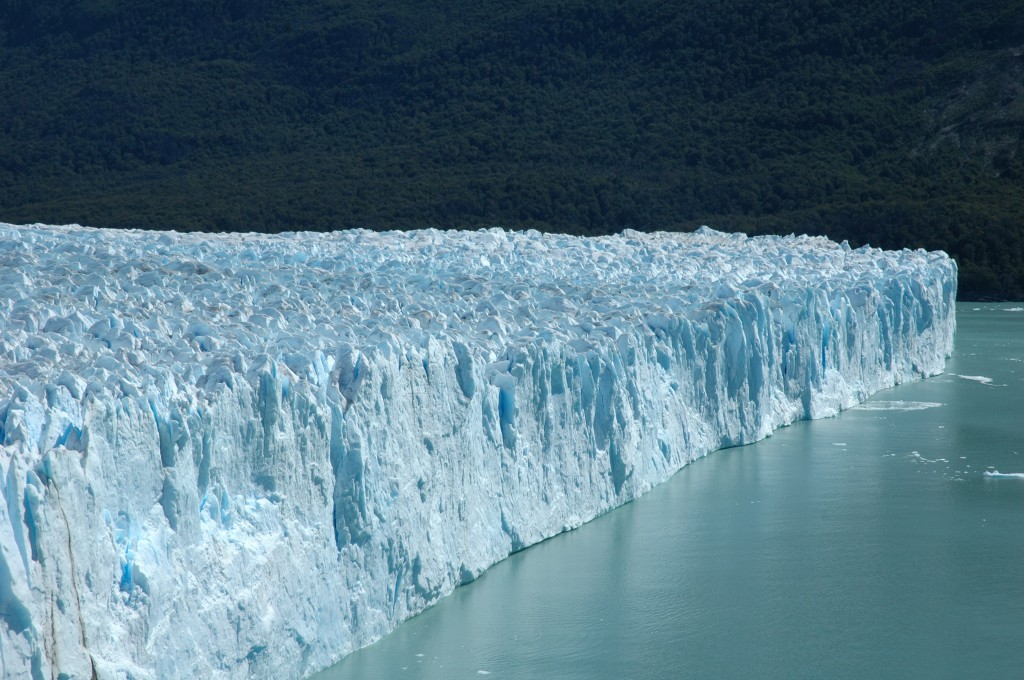





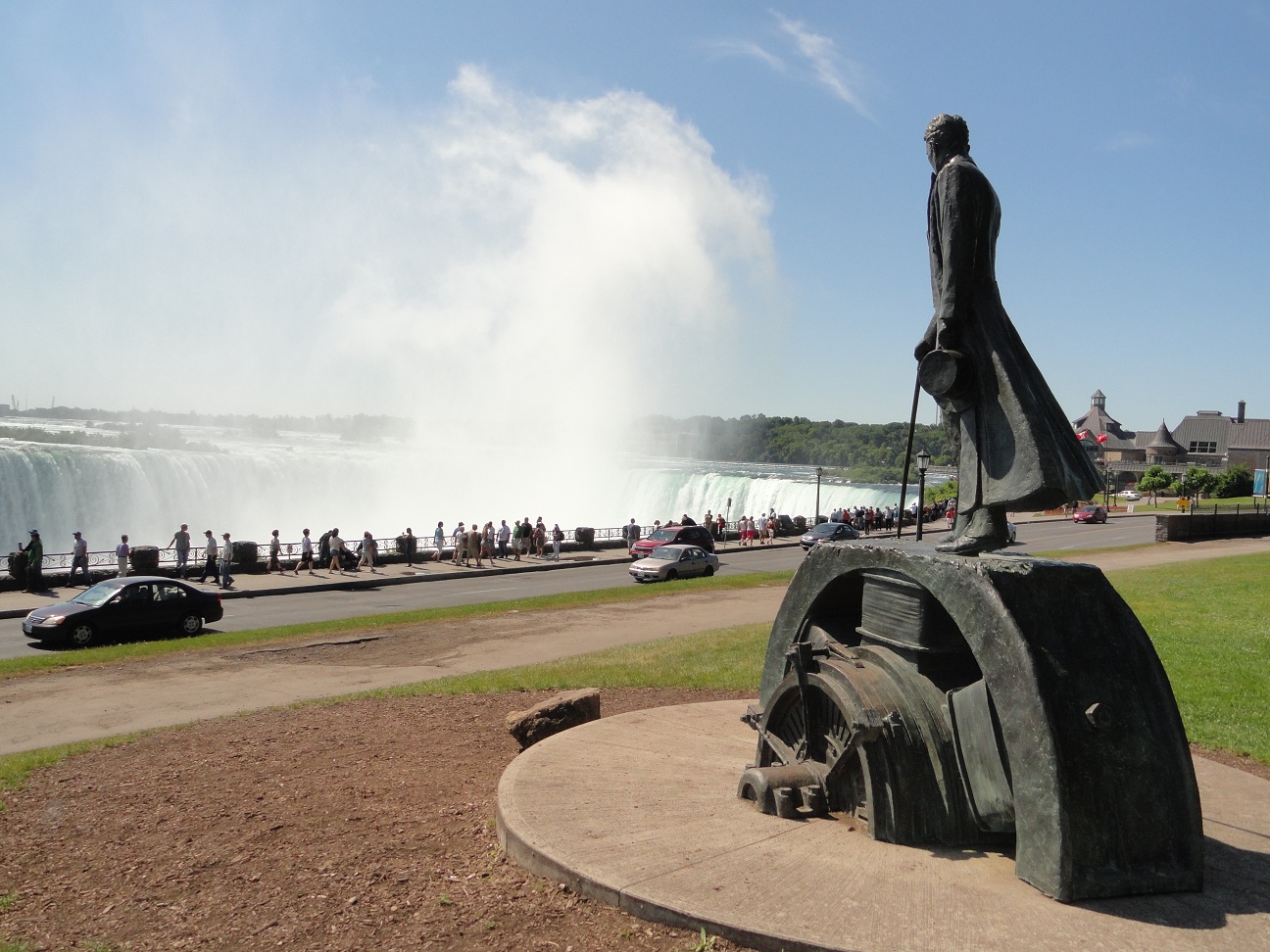
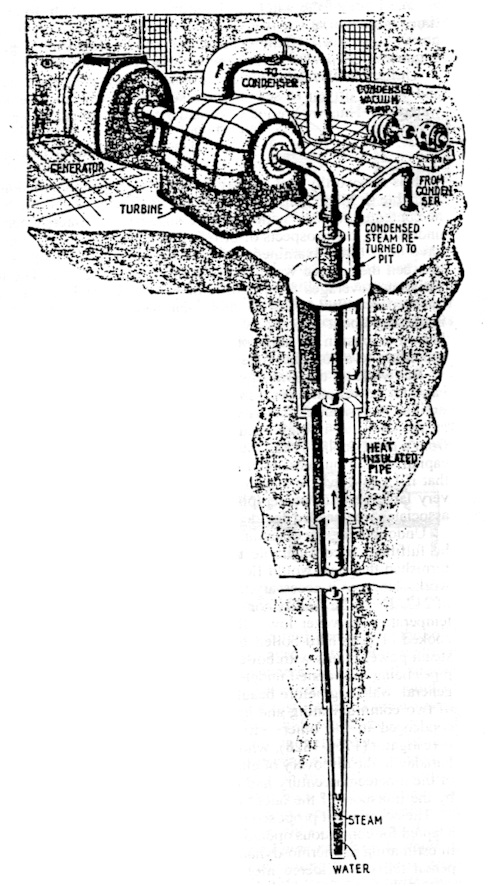
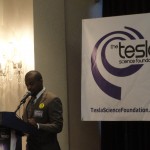 Bono* was there. I was there. Were you there? “There” is the New Yorker Hotel on January 11, 2014. And the occasion was the 2nd Annual Nikola Tesla Memorial Conference, sponsored by the
Bono* was there. I was there. Were you there? “There” is the New Yorker Hotel on January 11, 2014. And the occasion was the 2nd Annual Nikola Tesla Memorial Conference, sponsored by the 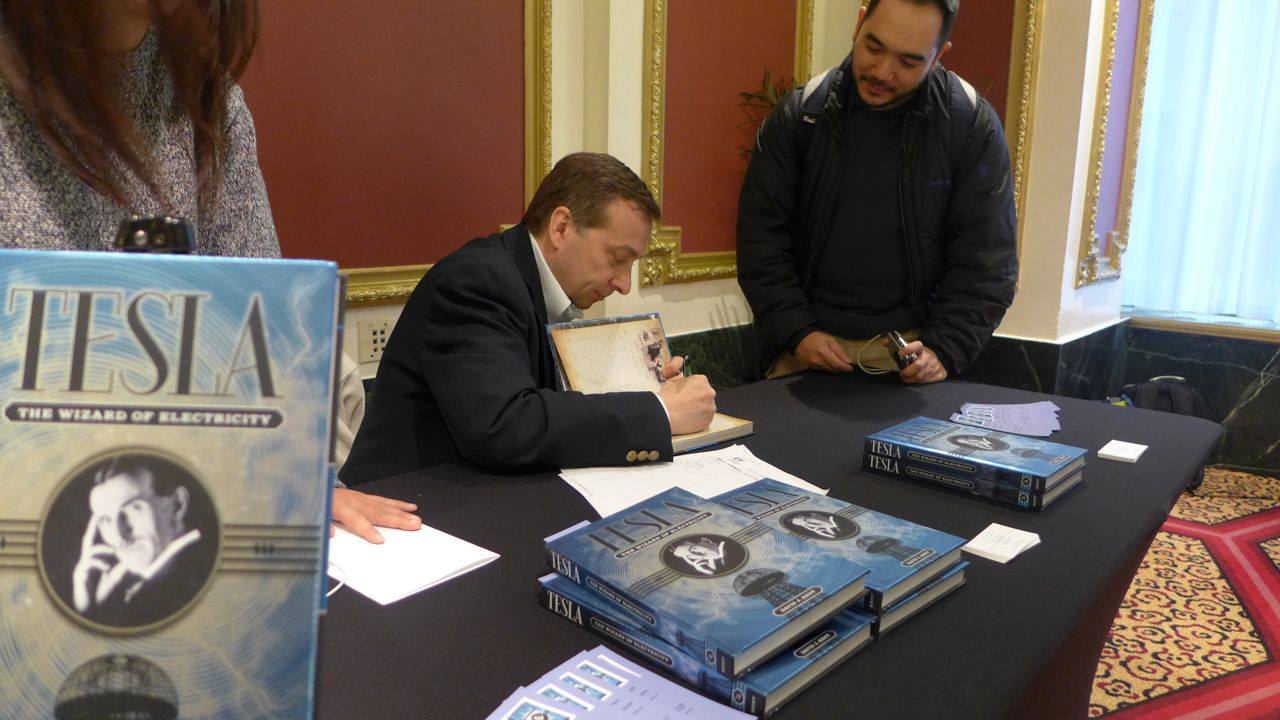
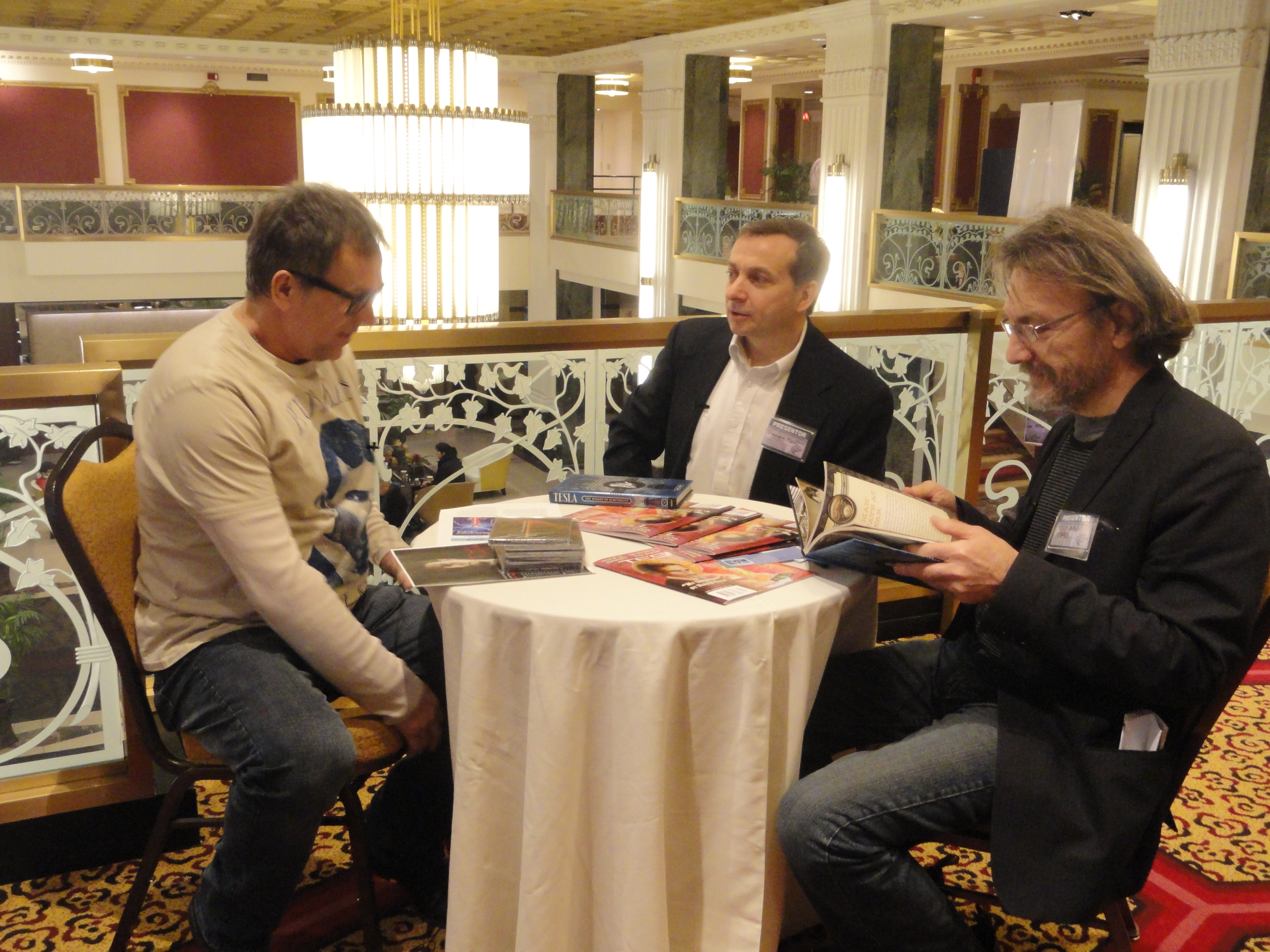
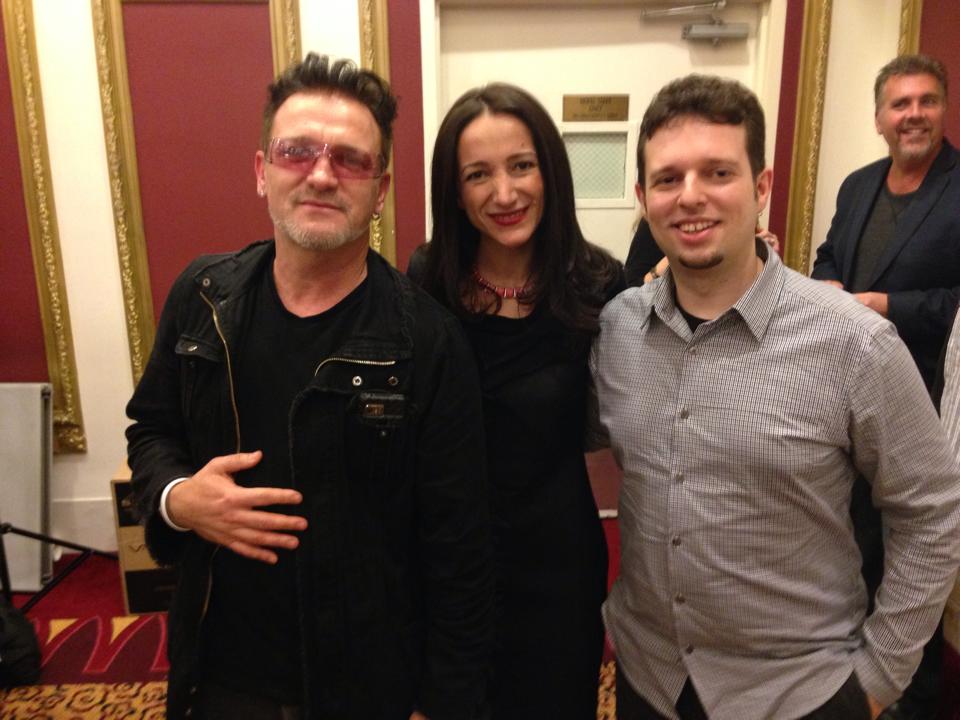
 One of the most amazing things about Nikola Tesla was that he was a man far ahead of his time. He pushed for renewable energy as early as 1895 at Niagara Falls. In 1898 he was demonstrating a remote controlled boat in Madison Square Garden. He patented a vertical-takeoff-and-landing aircraft in 1928. He even predicted that in the future there would be “an inexpensive receiver, not bigger than a watch, [that] will enable [any telephone subscriber] to listen anywhere, on land or sea, to a speech delivered or music played in some other place, however distant.”
One of the most amazing things about Nikola Tesla was that he was a man far ahead of his time. He pushed for renewable energy as early as 1895 at Niagara Falls. In 1898 he was demonstrating a remote controlled boat in Madison Square Garden. He patented a vertical-takeoff-and-landing aircraft in 1928. He even predicted that in the future there would be “an inexpensive receiver, not bigger than a watch, [that] will enable [any telephone subscriber] to listen anywhere, on land or sea, to a speech delivered or music played in some other place, however distant.”
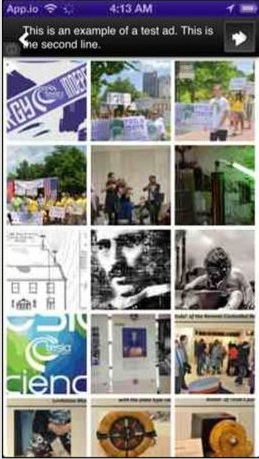
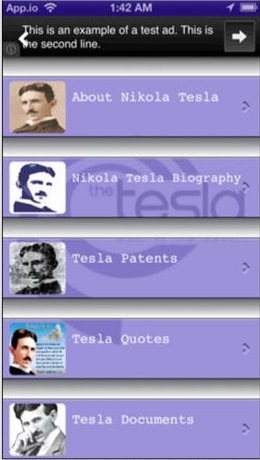 The main screen shows a rotation of the logo, the meetup group, event photos, and more. At the bottom of the screen there are a series of buttons (four are shown at a time, but swipe sideways to see the others appear). You can quickly tap into upcoming events, photos, background information, social media, and even submit your own photos and write on a fan wall.
The main screen shows a rotation of the logo, the meetup group, event photos, and more. At the bottom of the screen there are a series of buttons (four are shown at a time, but swipe sideways to see the others appear). You can quickly tap into upcoming events, photos, background information, social media, and even submit your own photos and write on a fan wall.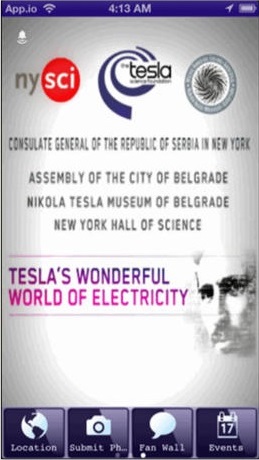
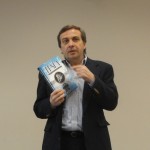 Nikola Tesla lived in the New Yorker Hotel for the last ten years of his life, passing away in Room 3327 on January 7, 1943. Last year I joined the Tesla Science Foundation for their Tesla Memorial Conference. And this year, you can too. The conference celebrates the life of the great Serbian-American inventor. Last year the conference focused on “Why Tesla Matters.” And this year the goal is even more ambitious.
Nikola Tesla lived in the New Yorker Hotel for the last ten years of his life, passing away in Room 3327 on January 7, 1943. Last year I joined the Tesla Science Foundation for their Tesla Memorial Conference. And this year, you can too. The conference celebrates the life of the great Serbian-American inventor. Last year the conference focused on “Why Tesla Matters.” And this year the goal is even more ambitious.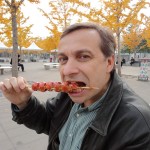 It seems like January 2013 was a blink away, but somehow an entire year has passed and that blink away is now January 2014. But oh what a year it was. A year of transitions, a year of excitement, and even a year with some major anxieties. But it is a year I will always remember – the year of Tesla.
It seems like January 2013 was a blink away, but somehow an entire year has passed and that blink away is now January 2014. But oh what a year it was. A year of transitions, a year of excitement, and even a year with some major anxieties. But it is a year I will always remember – the year of Tesla.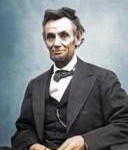 As I do research on Abraham Lincoln for a forthcoming book I periodically post reviews of some of the more interesting and relevant Lincoln scholarship. Which led me to this great book dating back to 1956 called Lincoln and the Tools of War by Robert V. Bruce.
As I do research on Abraham Lincoln for a forthcoming book I periodically post reviews of some of the more interesting and relevant Lincoln scholarship. Which led me to this great book dating back to 1956 called Lincoln and the Tools of War by Robert V. Bruce.






